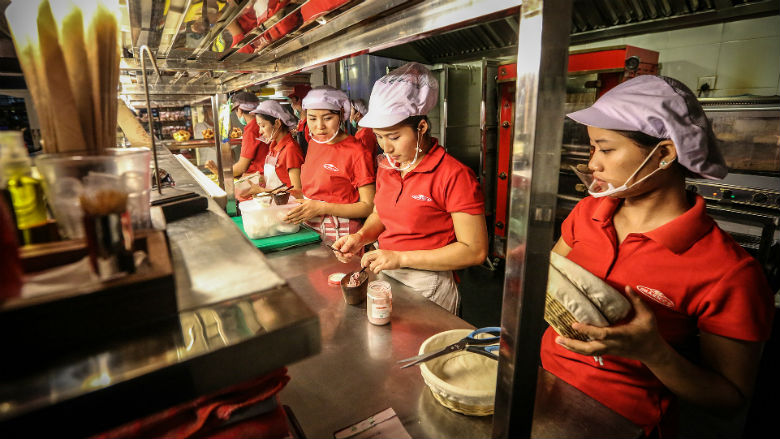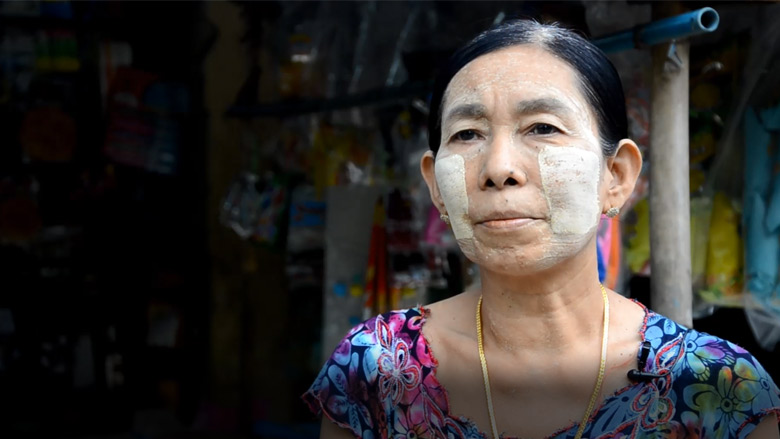Key Findings
After two years of strong economic growth and macroeconomic stability, Myanmar faced a more difficult economic environment in 2015-2016.
- During this period, economic growth in Myanmar eased to 7% from an average of 8.5% in 2014-2015 amid a supply shock from heavy flooding, a slowdown in new investment during an election year, and a more challenging external environment including lower commodity prices affecting Myanmar’s main exports.
- The historic elections of November 2015 created a general sense of economic optimism and private investors have remained upbeat. However, ongoing structural constraints, short-term exchange rate pressures, rising inflation, and the political transition have contributed to a deceleration in new investment flows.
- These developments have brought to the fore a number of short-term economic vulnerabilities for Myanmar. The impact of flooding in July-September 2015 on agriculture contributed to a sharp rise in inflation peaking at 16% in October 2015. Exports declined by 12% in nominal terms in the first three quarters of 2015-2016 compared to the same period last year due to the agriculture supply shock and declining commodity prices. This has contributed to a growing trade deficit and pressures on the exchange rate.
- The institutional capacity and policy responses to deal with these macroeconomic shocks and imbalances have faced some challenges including a sharp increase in monetary financing of the deficit, exacerbating inflationary pressures, and measures to contain the demand for foreign currency and imports.
Myanmar’s economic prospects remain strong, with a premium on sound macroeconomic policies and institutions that can help manage the pressures emerging in 2015-2016.
- In the short-term, this includes balancing a reduction in government deficit for economic stability and an increase in spending for public services and growth to help navigate the impact of lower commodity prices.
- Reducing the budget deficit and prudent public debt management could help reduce inflationary pressures, in addition to maintaining fiscal sustainability.
- Continuing to establish a well-functioning exchange rate system is likely to be critical in enabling Myanmar to keep benefiting from growing trade and investment opportunities. This means further strengthening of official market mechanisms (exchange rate auctions, interbank foreign exchange system) and maintaining exchange rate flexibility.
- Access to electricity remains a top priority for productivity and competitiveness in the economy. One of the main challenges in attracting investments is the financial viability of the power sector, which critically depends on tariff policies both for gas supply to the power sector and for electricity distribution.
- The reform of state-owned banks to promote transparency, stability and competitiveness of the financial sector is also a priority, as these banks still account for slightly more than half of total banking sector assets.
Economic outlook
- As the economy recovers from its 2015-2016 supply shock and private investments begin to pick up again, real GDP growth in Myanmar is projected to rise to 7.8% in 2016-2017, and average 8.2% per year over the medium-term.
- The agriculture sector is projected to bounce back over the short-term, while investors’ demand for services, and infrastructure construction, are expected to be the main drivers of growth.
- Inflationary pressures are expected to ease due to recovery from last year’s agriculture supply shock and projected low international commodity prices, averaging 8.5% over the course of 2016-2017.
- The Union Budget deficit is projected to average 3.5% of GDP over the medium-term, with a pick-up in Government revenue, which could average around 14% of GDP.
- Over the medium to longer-term, the manufacturing and processing sectors continue to hold strong promise as potentially important drivers of inclusive growth.

